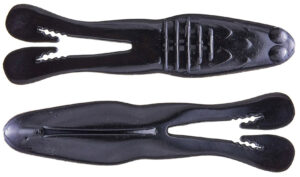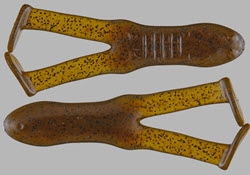
Let’s go over a topic that I don’t think I’ve written on before and that’s toads! No, not those hollow-bodied frogs you’re used to. I’m talking about soft plastic toads. This style of frog fishing is totally unique, different, and stands alone from hollow-bodied frogs. Let’s jump right into the world of toad fishing!
For years, toad fishing seemed very regional. In places like Florida and Louisiana, everyone was throwing toad-style lures. But in other parts of the country like the West Coast, Midwest, and even up here in the East, this style wasn’t as popular. Let me tell you, toad fishing is super effective anytime fish are feeding up or living shallow. It’s a killer technique, and today we’re going to break it all down.

Let’s start with the bait itself. You’ve probably heard them called toads, horny toads, or ribbits. I mainly use two styles of toads. The first one is the Berkley PowerBait Buzz’n Speed Toad. This one has a frog-like body with two little kicker legs that resemble the tail of a swimming worm. I use this one when I want a more subtle action, noise, vibration, and spit. The second style is the Berkley PowerBait Beat’n Paddle Frog. This toad has opposing boot tail legs that create more noise, vibration, and commotion.
So, how do I choose which toad to use? It’s pretty simple. For the Buzz’n Speed Toad with subtle legs, I use it in clear water, with spooky fish, and calm conditions. This toad is perfect for days with no wind, high bright sun, and less cover. On the other hand, the Beat’n Paddle Frog with kicker legs is my go-to in dirty or stained water, when I need to make more noise, and for aggressive fish. Low light conditions like early morning, evening, and night fishing, or when there’s a ripple on the surface, call for this toad.

Colors are another important aspect. I keep it simple, just like with hollow-bodied frogs. I stick to basic colors like green pumpkin, white, watermelon with a pearl belly, and black. I also keep one bright color like chartreuse. The idea is to imitate natural prey like bluegill, shad, or an actual toad. No need to go crazy with colors; simplicity is key.
Rigging these toads is straightforward. I mainly use two styles of hooks. The first is a heavy-duty swimbait hook, size 3/0 to 5/0, with 4/0 being perfect for these toads. This hook is great for a traditional Texas rig, which helps avoid snags and grass fouls. The second hook is a weighted model of the same heavy-duty swimbait hook. The added weight helps the toad run straight and cast further, allowing it to be used as a subsurface wake bait.
When it comes to fishing these toads, the retrieve is crucial. For the Buzz’n Speed Toad, I fish it as a topwater lure. I cast past the cover and keep my rod at a one or two o’clock position, buzzing it along the surface. If a fish blows on it and misses, I kill the retrieve and lean forward, letting the toad sink. Most of the time, the fish will come back and suck it in. For the Beat’n Paddle Frog, I fish it as a wake bait with the weighted hook. I cast it past the cover, keep my rod at a two or three o’clock position, and slow down the retrieve to create a ripple just under the surface.
Finally, don’t sleep on using a toad as a buzzbait trailer. Pull off the skirt, thread the toad on the buzzbait, and you’ve got a different presentation that planes well and adds extra noise.
So there you have it, the ins and outs of toad fishing. If you haven’t tried this technique yet, now’s the time. From late spring to late fall, anytime those fish are shallow or feeding up, toad fishing is a technique you need in your arsenal. Get out there and give it a try!
___________________
______________________________________
Like Ike on Facebook, and follow him on Instagram and TikTok for fishing and fun content.
Subscribe to Mike’s YouTube channel, to ensure you see every adventure video. (Download the YouTube app on your phone and the videos will come to you automatically.)
















